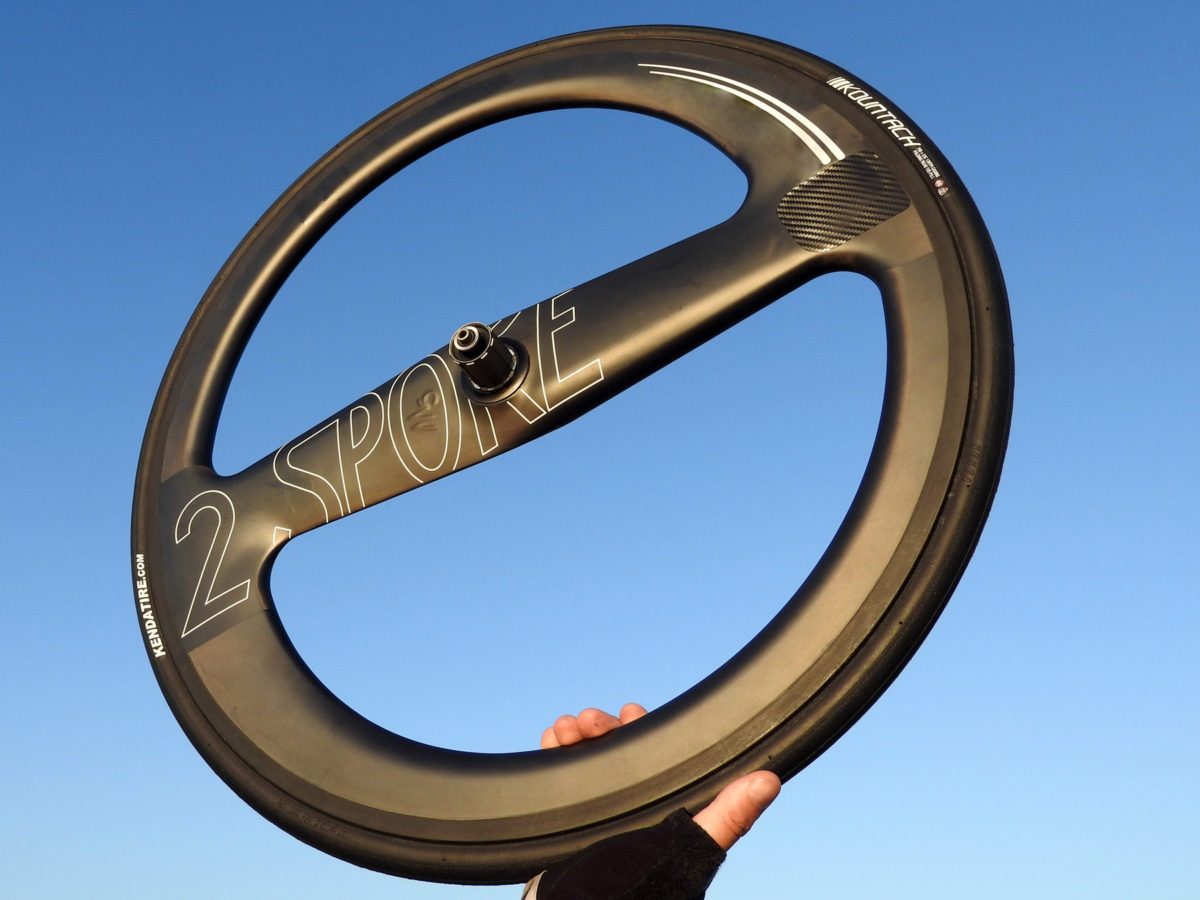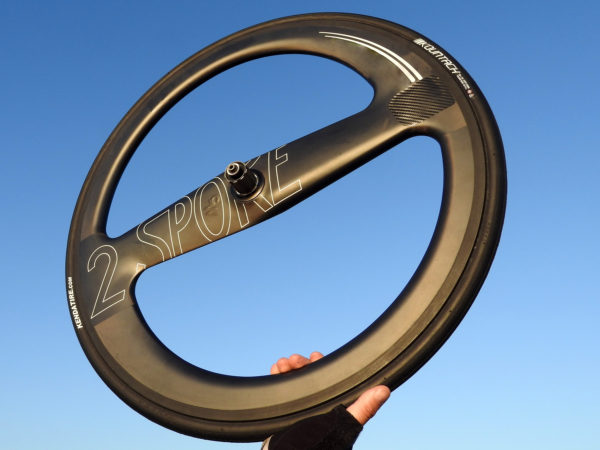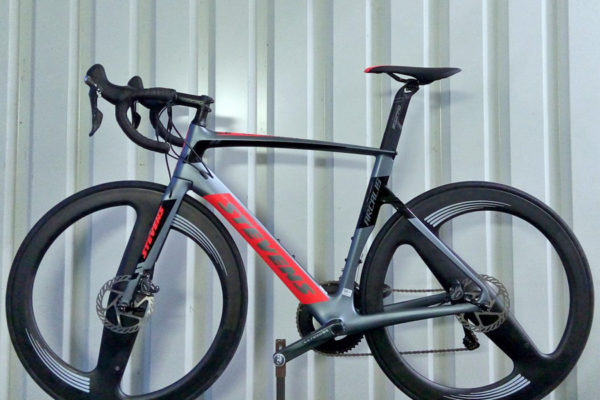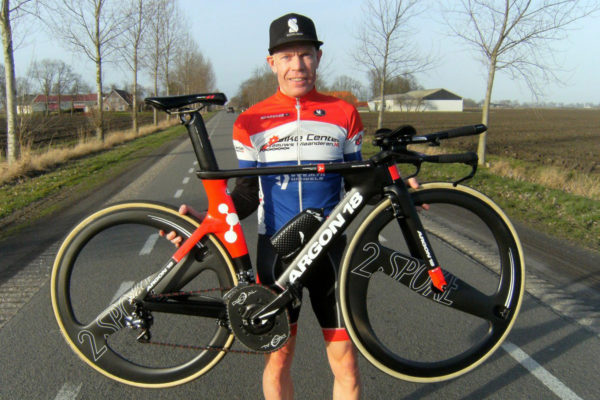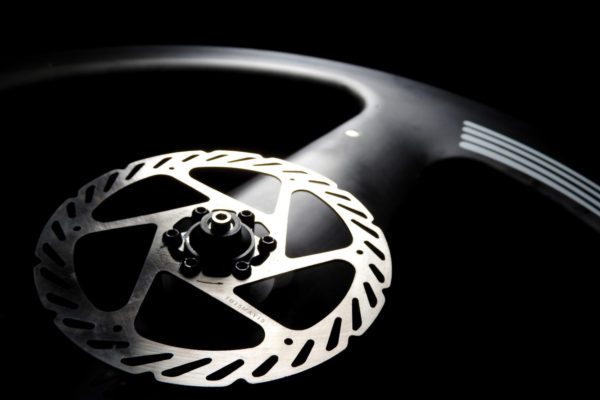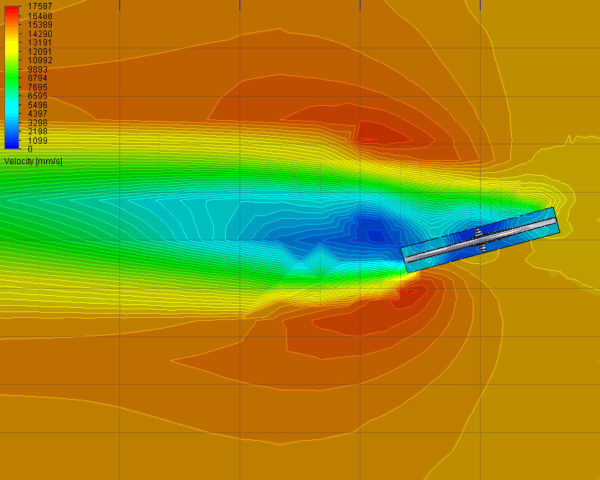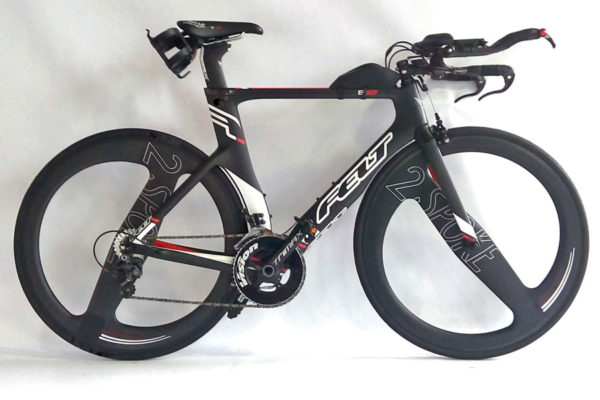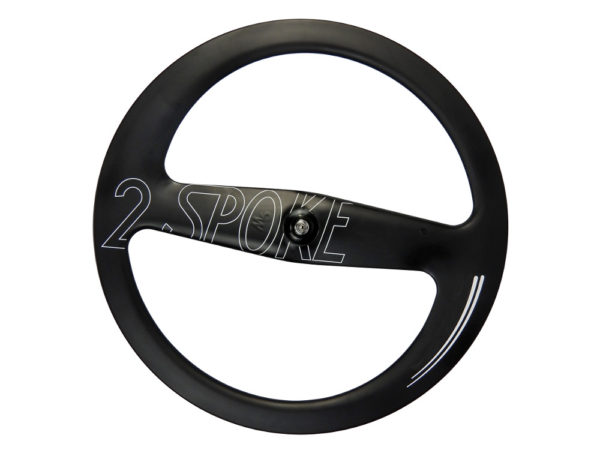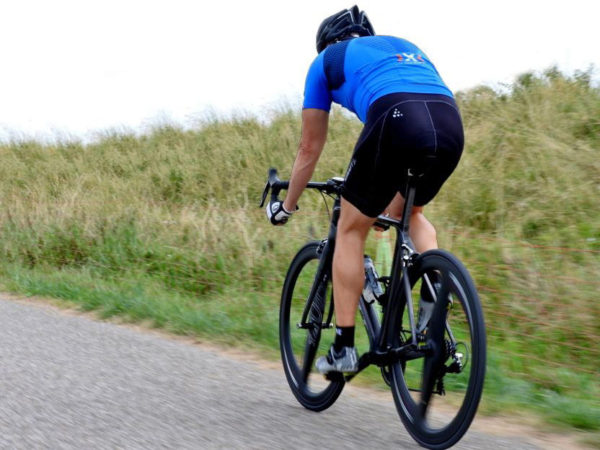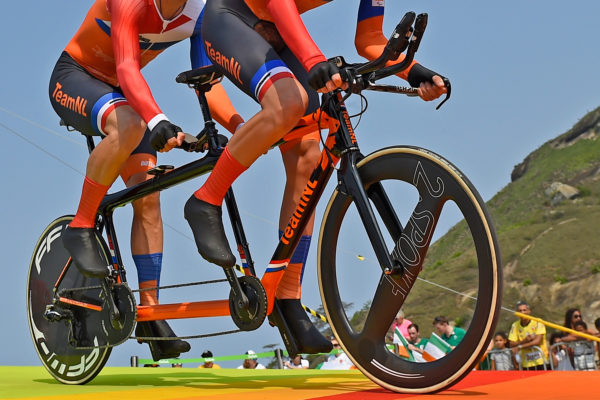
‘Aero is Everything‘ is one of the most recent mantras in road cycling, and we’ve seen all manner of attempts to cheat the wind. The latest, and one of the most dramatic that we’ve come across are the appropriately named 2-Spoke wheels from Dutch outfit M5. Watching any road race against the clock, it’s been clear for a while that traditional spoke wheels must generate more drag, as top pros often end up racing 3-5 spoked front wheels paired sometimes with solid disc out back to slice through the wind more cleanly.
Now with carbon wheel construction continuing to advance, the Dutch aero experts at M5 have cut the spoked wheel back to just two in what they are claiming is the lowest wind resistance of any commercially available road wheel – comparing from traditional spokes to bladed spoke wheels, even to discs. And while that does seem like a pretty wild claim, Dutch riders won several medals on the wheels at the Rio Paralympics, they’ve been raced on the track at the Olympics, in Qatar at the World TT champs, and now the elite Dutch TT champion has just signed on to race them in 2017. And they are even available for disc brake bikes too…
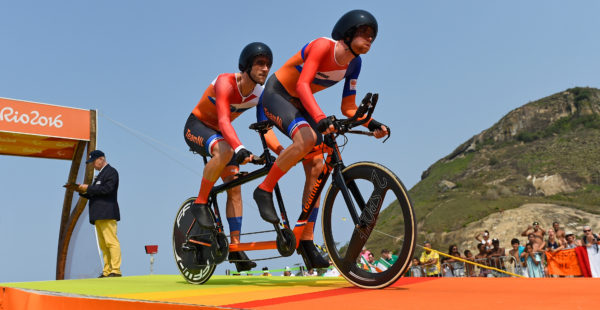
Blind stoker Vincent Ter Shure and sighted captain Timo Fransen pedaled to Paralympic Gold on the road & Silver in the TT with a 2-Spoke on their tandem giving some support to the idea that the wheels are structurally sound, even missing more spokes.
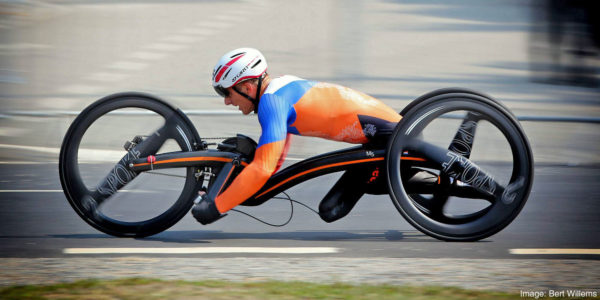
Then rider Jetze Plat spun up another couple of medals, with a Gold in the Triathlon and a Bronze in his road H5 category with three of the 2-Spokes on his handcycle.
The M5 2-Spoke wheels uses a unique directional design that has a single airfoil shaped spar connecting the rim to the hub (and making up the two spokes) It then uses a 23.7 mm wide rim profile that varies in depth as it rotates, maintaining a mid-depth 48mm profile as it approaches the transition in the wind at the spoke blades, but then gets deeper up to 90mm after the spoke cuts through the air to more smoothly more smoothly transition the airflow again. It results in a somewhat similar varied rim depth to the Zipp 454 NSW, but with 2 spokes instead of 18 or 24.
The 2-Spokes are available in several configurations, including road & track tubulars as well as road, road disc, and track clinchers. The wheels are built with a mix of pretty standard T800 & T1000 UD carbon for a reliable balance of strength to weight. That puts the lightest track tubulars at about 1810g for a set, 20g more for road tubulars, 1870g for a set of road clinchers, plus another 85g for road disc clinchers. While that isn’t very light for a high-end carbon wheelset, M5 does say that the rim portion itself is rather light, putting more of the weight closer to the hub where rotational inertia is less of a concern.
The wheels have UCI approval for time trial and track competition. M5 has just partnered with recently crowned Dutch elite TT national champion Remco Grasman who will be racing on 2-SPokes for 2017, so we’ll start to see them more in some bigger UCI races.
They get M5’s own bonded-in alloy hubs with Japanese bearings, available for Shimano or Campy freehubs or of course track. The rim brake road wheels include a basalt braking surface, and the disc wheels use the 6-bolt standard.
The design was first developed through CFD aero studies, then M5 took them into the wind tunnel to put them head to head with deep section conventionally spoked wheels; 3, 4, 5 & 6 spoked carbon wheels, and even solid discs. They say their results “show very clearly the number 1 position of the 2-Spoke wheel versus ALL other current wheel types” but are holding their data close to the chest for now.
The wheels are made in the Netherlands, and while certainly not cheap, are actually more affordable than many top-level wheels from the big names in aero carbon. Pricing for the wheels is essentially the same for any version: 1178€ for front wheels and 1260€ for rear wheels. M5 sells the wheels through some partner retailers but also direct to consumers with payment via bank transfer, and offers delivery worldwide.
Plus, without traditional spokes the clinchers get an uninterrupted rim bed and are tubeless ready. There is a lot of inertia in the pro peloton away from the norm of rim brakes and tubulars, but when you are a company already making an unconventional wheel it makes sense to adopt the latest technologies.
With rolling resistance studies showing gains with tubeless setups and seeing some pros already winning on aero bikes benefiting from more consistent braking no matter the weather, it’s nice to see new wheel designs like this adopting the latest tech.
